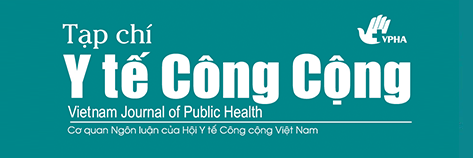Nghiên cứu mối liên quan giữa sốt xuất huyết dengue và một số yếu tố vi khí hậu tại tỉnh Khánh Hòa trong 11 năm (2004-2014) (Study on the relationship between dengue hemorrhagic fever distribution and microclimate factors in Khanh Hoa province in an 11 year period (2011-2014))
Tóm tắt
Sự xuất hiện và phân bố ca bệnh sốt xuất huyết Dengue đã được ghi nhận là có liên quan đến các yếu tố vi khí hậu. Là địa phương lưu hành bệnh dịch này, nghiên cứu mô hình phân bố ca bệnh và mối liên quan giữa sự phân bố ca bệnh với các yếu tố vi khí hậu tại tỉnh Khánh Hòa sẽ giúp cho công tác phòng chống dịch của địa phương. Qua thống kê và phân tích số liệu ca bệnh và các yếu tố vi khí hậu trong khoảng thời gian 11 năm, sử dụng phân tích hồi quy tuyến tính, tác giả đã cho thấy mô hình hồi quy tuyến tính với các yếu tố vi khí hậu bao gồm nhiệt độ trung bình, độ ẩm và lượng mưa đã giải thích cho 20% sự biến thiên ca bệnh của thành phố Nha Trang và 30% sự biến thiên ca bệnh của thành phố Cam Ranh. Mô hình phân bố ca bệnh cho thấy sự tương tự nhau giữa Nha Trang và Ninh Hòa; giữa Vạn Ninh và Diên Khánh; giữa Cam Ranh và Cam Lâm.
English abstracts
Appearance and distribution of Dengue Hemorrhagic Fever (DHF) has been documented to be associated with microclimate factors. Studies on the distribution pattern and its connection with microclimate factors in Khanh Hoa province, which has been considered a DHF epidemic, would be helpful in preventing outbreaks in the region. Using statistics of DHF cases and a linear regression approach from 2011 to2014, the study showed that the model of three independent variables: average temperature, average humidity and average rainfall varied, it explains 20% of DHF cases in the city of Nha Trang and 30% in the city of Cam Ranh y. There existed a similarity in DHF distribuition between Nha Trang and Ninh Hoa; between Van Ninh and Dien Khanh; and between Cam Ranh and Cam Lam.
Từ khóa
Toàn văn:
PDF (English)##submission.citations##
Do, T.T., et al. (2014), Climatic-driven seasonality of emerging dengue fever in Hanoi, Vietnam. BMC Public Health. 14(1): p. 1078.
Fan, J., et al. (2014), A Systematic Review and Meta-Analysis of Dengue Risk with Temperature Change. International Journal of Environmental Research and Public Health. 12(1): p. 1-15.
Hales, S., et al.(2002), Potential effect of population and climate changes on global distribution of dengue fever: an empirical model. The Lancet. 360(9336): p. 830-834.
Hii, Y.L., et al (2012), Forecast of dengue incidence using temperature and rainfall. PLoS neglected tropical diseases. 6(11): p. e1908.
Horta, M.A., et al.(2014), Temporal Relationship between Climatic Factors and the Occurrence of Dengue Fever in an Amazonian Urban Center, Brazil.
Karim, M., et al.(2012), Climatic factors influencing dengue cases in Dhaka city: a model for dengue prediction. Indian Journal of Medical Research. 136(1): p. 32-39.
Minh An, D.T. and J. Rocklöv (2014), Epidemiology of dengue fever in Hanoi from 2002 to 2010 and its meteorological determinants. Global Health Action.
Phung, D., et al.(2015), Identification of the prediction model for dengue incidence in Can Tho city, a Mekong Delta area in Vietnam. Acta tropica. 141: p. 88-96.
Tsuzuki, A., et al.(2009), High potential risk of dengue transmission during the hot-dry season in Nha Trang City, Vietnam. Acta tropica. 111(3): p. 325-329.
Wu, P.-C., et al.(2009), Higher temperature and urbanization affect the spatial patterns of dengue fever transmission in subtropical Taiwan. Science of the total environment. 407(7): p. 2224-2233.



